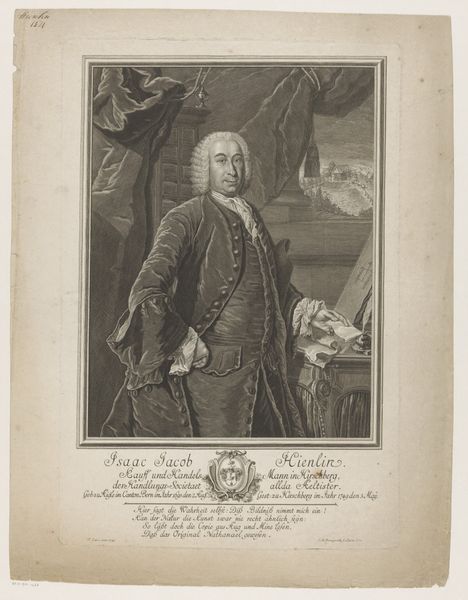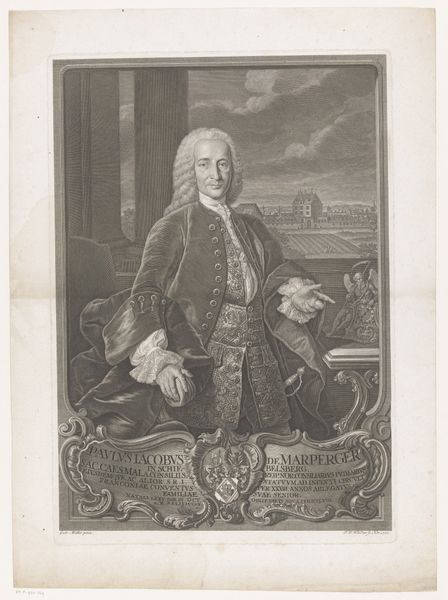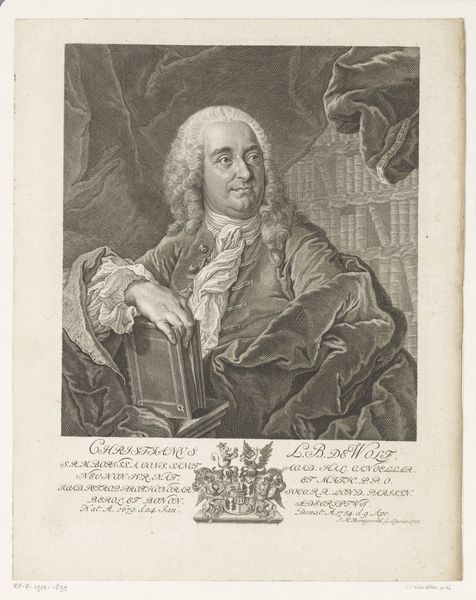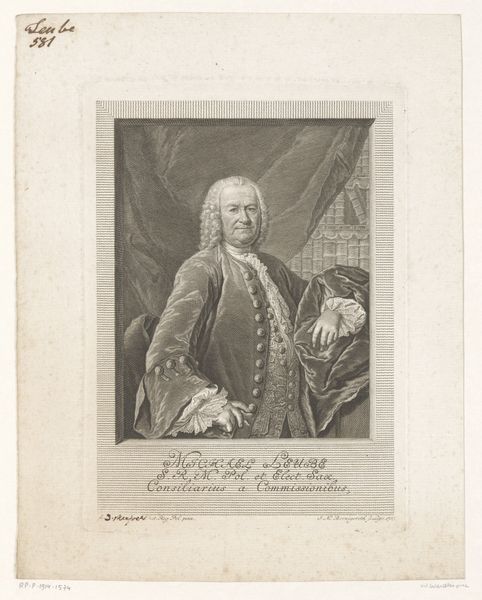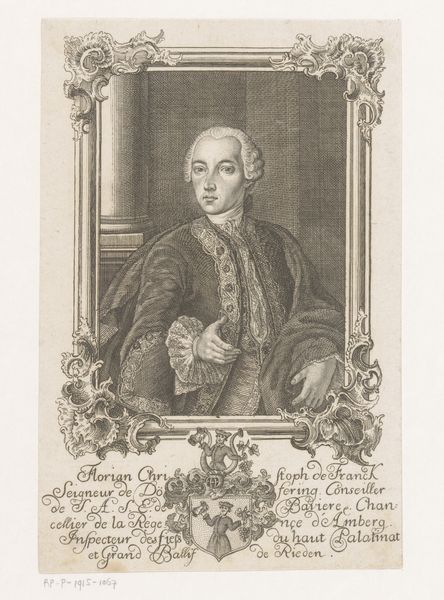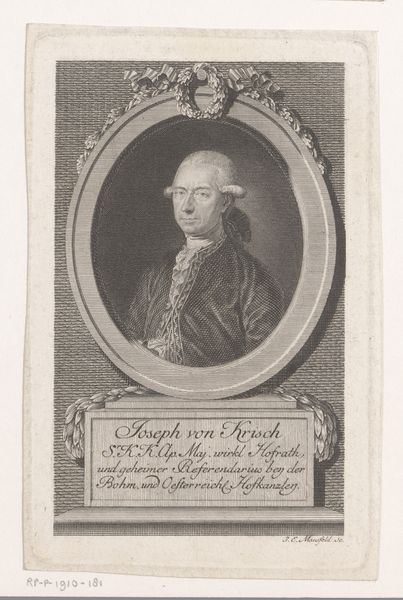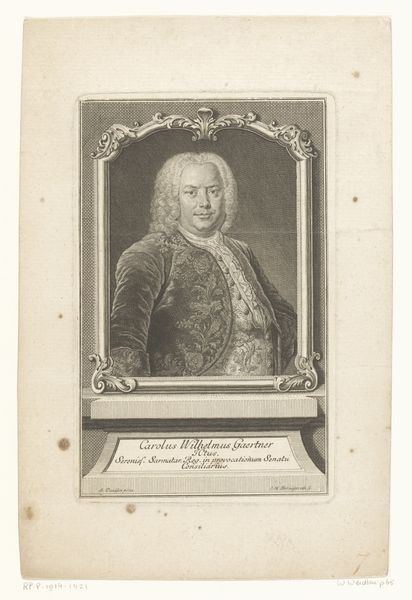
#
pencil drawn
#
aged paper
#
light pencil work
#
photo restoration
#
parchment
#
book
#
pencil sketch
#
old engraving style
#
tea stained
#
personal sketchbook
#
watercolor
Dimensions: height 188 mm, width 106 mm
Copyright: Rijks Museum: Open Domain
Editor: This is Johann Martin Bernigeroth's "Portret van Johann Christoph Gottsched" from 1757, housed at the Rijksmuseum. It looks like it’s made with pencil on, what, parchment perhaps? The detail is just astonishing! What particularly strikes me is the density of the mark-making. How would you begin to unpack this piece? Curator: What I see first is the labor involved. Think about the sheer hours required to create this level of detail with just a pencil. It underscores the economic realities that made such detailed work possible. The artist had to eat and get shelter, who paid for that labour, what was the patron-artist relationship? What was the division of labour? Were there assistants involved? How was this portrait ultimately consumed and distributed in the marketplace? Editor: So, it’s not just about the likeness of Gottsched, but about the entire system that allowed this image to be created? Curator: Precisely. Consider the paper itself. Was it locally sourced or imported? The access to quality materials reflects a network of trade and colonial exploitation. The very materiality speaks volumes about power structures. The book in the background is a tool. Look at it closely, how the depiction of its covers and spine denote craftsmanship. It alludes to intellectual labor but simultaneously hides the very real labor behind making the book as object. Editor: That’s a perspective I hadn't considered. It shifts the focus from the subject, Gottsched, to the conditions of the work’s production. Curator: Indeed. The material tells us who had access to resources, whose labor was valued, and how cultural capital was circulated in 18th-century society. And the consumption - how would this image travel in the world? Who could afford it? To truly understand art we have to understand the conditions surrounding art. Editor: Wow, I'm starting to see this portrait as less of a depiction and more as a document of its own making. Curator: Exactly, we look not at Gottsched but at a specific moment of consumption, labor, production and privilege.
Comments
No comments
Be the first to comment and join the conversation on the ultimate creative platform.


